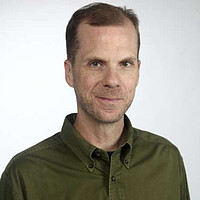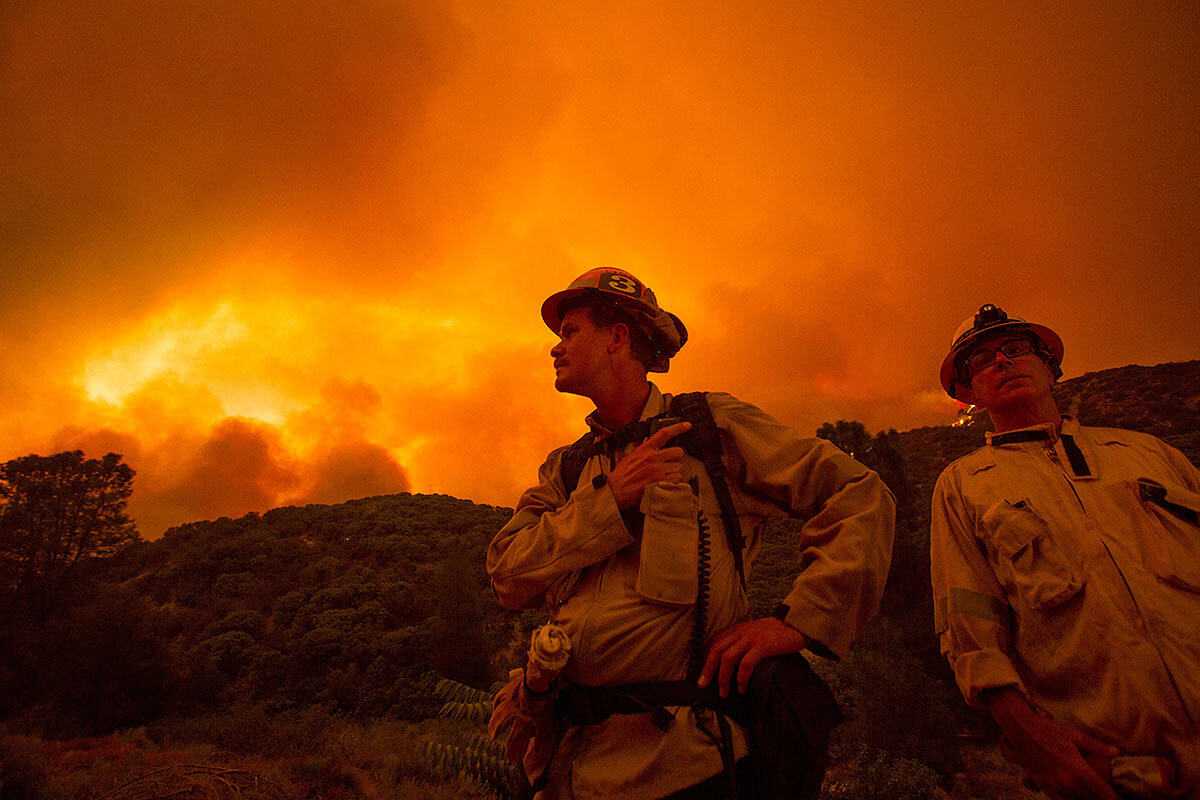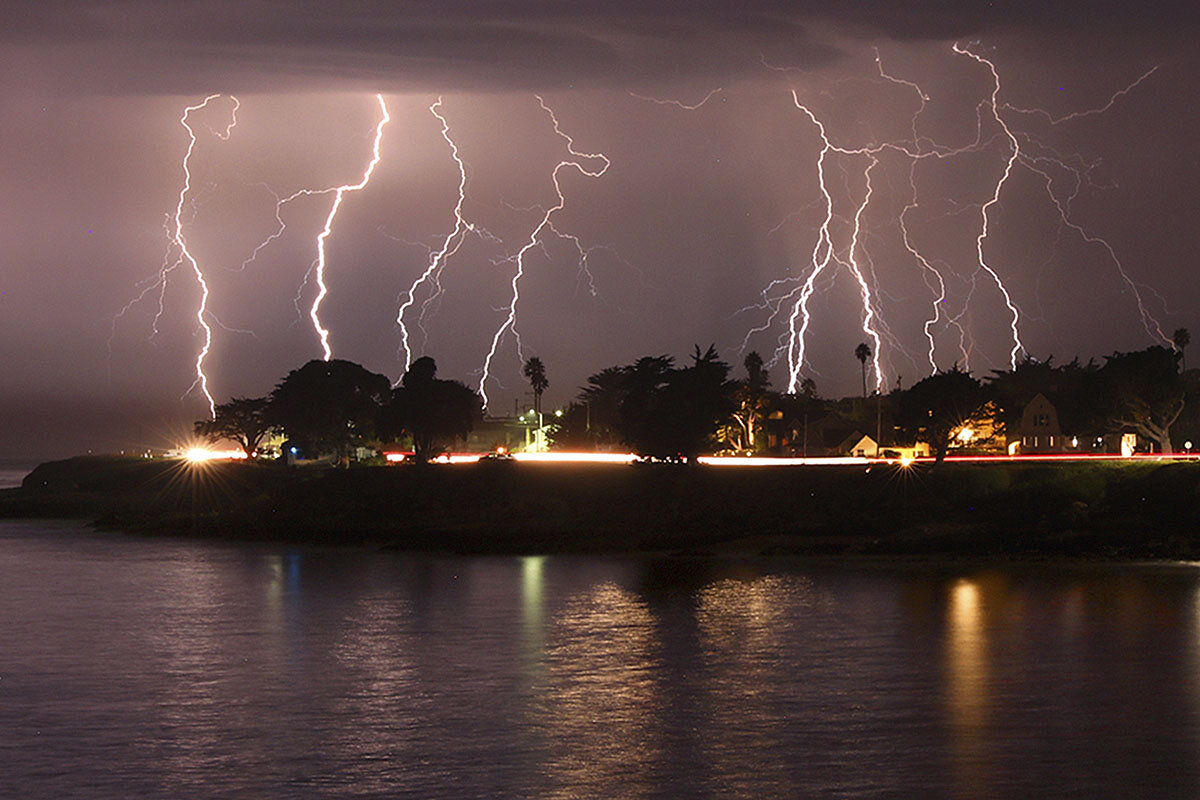What should wildfire prevention look like? Three experts urge action.
| Sacramento, Calif.
Summer in California has burst into flames yet again. Some 600 wildfires have scorched more than 1 million acres of land over the past two weeks, forcing the evacuation of an estimated 120,000 people and destroying in excess of 1,000 homes and other structures. The cataclysm of infernos – sparked in many areas by dry-lightning strikes – has killed seven people and inflicted an untold toll on livestock and wildlife.
In recent years, the spectacle of burning landscapes and ash-smeared skies has attained a harrowing familiarity for Californians, with fires torching chaparral shrublands in Southern California, coastal redwoods in the San Francisco Bay Area, and mountain forests in the Sierra Nevada. A confluence of factors has wrought a perennial menace, including overgrown forests and grasslands, climate change and drought, aging utility grids, and increased development in wildlands.
To better understand the recurring crisis, the Monitor spoke with a trio of wildfire researchers: Lenya Quinn-Davidson, a fire area adviser with the University of California system and director of the Northern California Prescribed Fire Council; Bill Stewart, co-director of Berkeley Forests at the University of California, Berkeley; and Marti Witter, a fire ecologist with the National Park Service based in Southern California.
Why We Wrote This
As wildfires ravage California, firefighters have leapt into action to try to save communities and beloved forests. The long-term challenge, say three fire researchers, is making progress on preventive action.
They discussed the merits and drawbacks of various approaches – prescribed fire, thinning, natural burning – to reduce the dead trees and other fuels that feed wildfires; prevention strategies that federal, state, and private land managers should enact; and potential long-range solutions for limiting wildfire destruction. Interviews have been edited and condensed.
Q: Beyond widely accepted reasons for wildfires growing in size, severity, and frequency, why hasn’t California made more progress in slowing the trend?
Ms. Quinn-Davidson: Our fire management and our land management haven’t kept pace with the scientific understanding we have of fire in California. There’s this fear of active land management – prescribed burning, thinning – that sometimes gets in the way of us making good choices. If we’re not protecting the resources we care about and we’re not taking action, then we will continue to lose them to big fires.
Mr. Stewart: Many of the fires around the greater Bay Area are in areas that didn’t burn 30 years ago because they were cattle ranches. They had cattle on them, and that helped reduce fuels. Now those areas have turned into parks or 5- and 10-acre residential lots. So much development has been about what’s aesthetically pleasing, so we’ve ended up with a landscape that, during hot and dry seasons, there’s a lot more fuel and it becomes a much riskier situation.
Ms. Witter: One thing that’s underappreciated is how much fires are driven – and this is true nationwide – by human ignitions and human activity. Lightning-driven ignitions [that cause widespread destruction] are much more uncommon. There has been very little serious attention paid to prevention of fires caused and sustained by human activity.
Q: The state has upped its efforts to reduce forest overgrowth. Does there need to be even more of that? Can that help with controlling wildfire and restoring forest health?
Ms. Witter: The state thinks that if they do enough fuels projects, it’ll solve the problem. But in those systems that need fire to remain healthy, you’ll never reach the target levels [of fuel reduction] using prescribed fire because the areas are too big. That means you have to let a lot more natural fires burn and monitor them. But that’s always so controversial. The fire agencies say, “Yup, let that one burn,” and then people’s homes or forests get damaged, and the agencies are held liable.
Ms. Quinn-Davidson: We need to be thinking about active forest management with prescribed fire and thinning, and deploying those in strategic ways that allow us to leverage natural wildfires on the bigger landscape level. We know we’re not going to be able to thin or prescribe burn all the area that needs it, so we need to be able to use wildfire to do some of that work for us.
Q: The federal government owns more than half of California’s 33 million acres of forest land and has been less aggressive about fuel reduction. Is that contributing to the state’s problems?
Mr. Stewart: There are national parks in California – Yosemite and Sequoia – that have had stable fire management practices since the ’60s. They still have big wildfires, but they reintroduced prescribed fire over time and brought some resilience back to their forests. They’ve made the landscape more of a mosaic so there isn’t continuous fuel in every direction. The [U.S.] Forest Service and federal wilderness areas have not achieved that. They’re still a problem. They have to reintegrate fuel treatments with forest management, but they say, “We’re not sure we can do that because someone is going to yell at us.” We’re still fighting the timber wars in the West.
Ms. Witter: I don’t often go to fire and fuels management conferences. But when I do, I’m struck by how frustrated everyone is at their inability to get work done [due to bureaucratic hurdles]. Even people who just want to put prescribed fire on brown dirt to manage wildfires are totally inhibited in doing what they need to do.
Q: Part of California’s challenge is that most of its fire prevention resources go toward putting out fires. Is there more that local communities could be doing to share the burden as far as treating land and fuel reduction?
Ms. Quinn-Davidson: I find that a lot of the state fire management agencies like Cal Fire [California Department of Forestry and Fire Protection] and some of the federal agencies – there’s an attitude that the public is a problem. We need to move beyond that. I work with a lot of community members and private landowners, and there’s a pretty strong desire for more prescribed fire, more thinning, more work on fire. People want to be involved and want to understand what they can do so they’re not sitting around waiting for Cal Fire or the Forest Service to take care of the problem.
Ms. Witter: A lot of the state and federal people are overwhelmed and overworked by fighting fires. With prevention, you have to be on the ground all the time. It has to be people in the community who are there and able to carry through the work that needs to be done.
Q: There isn’t always agreement among federal, state, and private land managers about how to lower fire risks, which often leads to inaction. How can that be changed?
Mr. Stewart: Part of the issue with trying to have more coordination is saying, “We’re going to have one grand plan everywhere.” But the approach that works in one part of the state doesn’t necessarily work in others. So what we need is to try different approaches and see what works. Experimentation on a grand scale is really needed on public lands because if everybody keeps waiting until we agree on one plan, nothing will change.
Ms. Quinn-Davidson: We need more coordination because we lack a shared vision of how we’re going to live with fire. We know it’s not going away. So we need public agencies, communities, Native American tribes, private landowners – everybody has to be involved. We really need to aspire to get to that place where there isn’t this division between experts and the public, where we’re all kind of one fire-adapted culture.
Q: The era of megafires in California has been decades in the making. How can public agencies begin to counter that over the next few years?
Ms. Quinn-Davidson: We need to create a more robust and sustainable fire workforce. Right now, they’re so beat down at the end of fire season – especially as fire season is getting longer in California – that there’s basically no capacity the rest of the year to do any of the proactive stuff we need to be doing. So we need to create more jobs, and those jobs need to be dedicated to fire management and land management.
Mr. Stewart: We’ve been trying to convince the Forest Service to look at what the Forest Stewardship Council does, which is combine fuels management with timber harvesting to produce revenue. Right now, the Forest Service is afraid to generate revenue and reinvest it because they’re not supposed to produce profits off public lands. But that’s their challenge, because at this rate, they’re never going to treat more than a hundred acres a year.
Ms. Witter: There are all kinds of prevention plans. We don’t need more prevention plans. We need prevention action.








